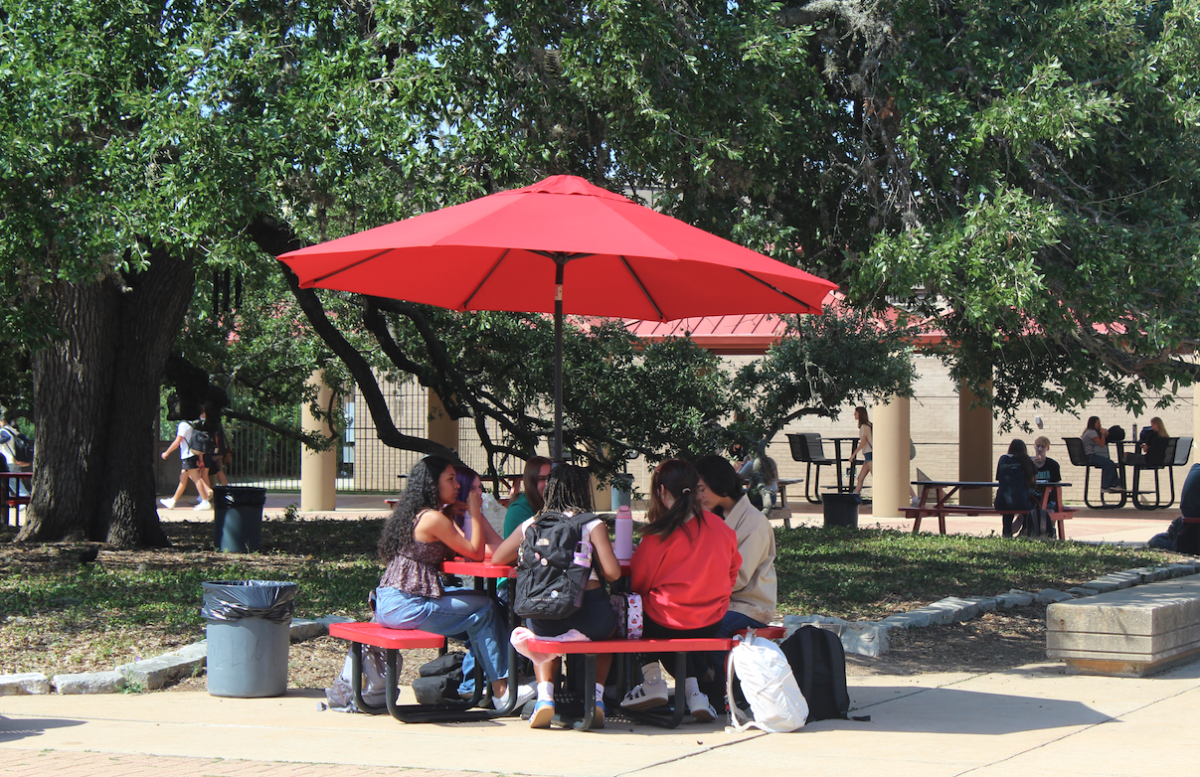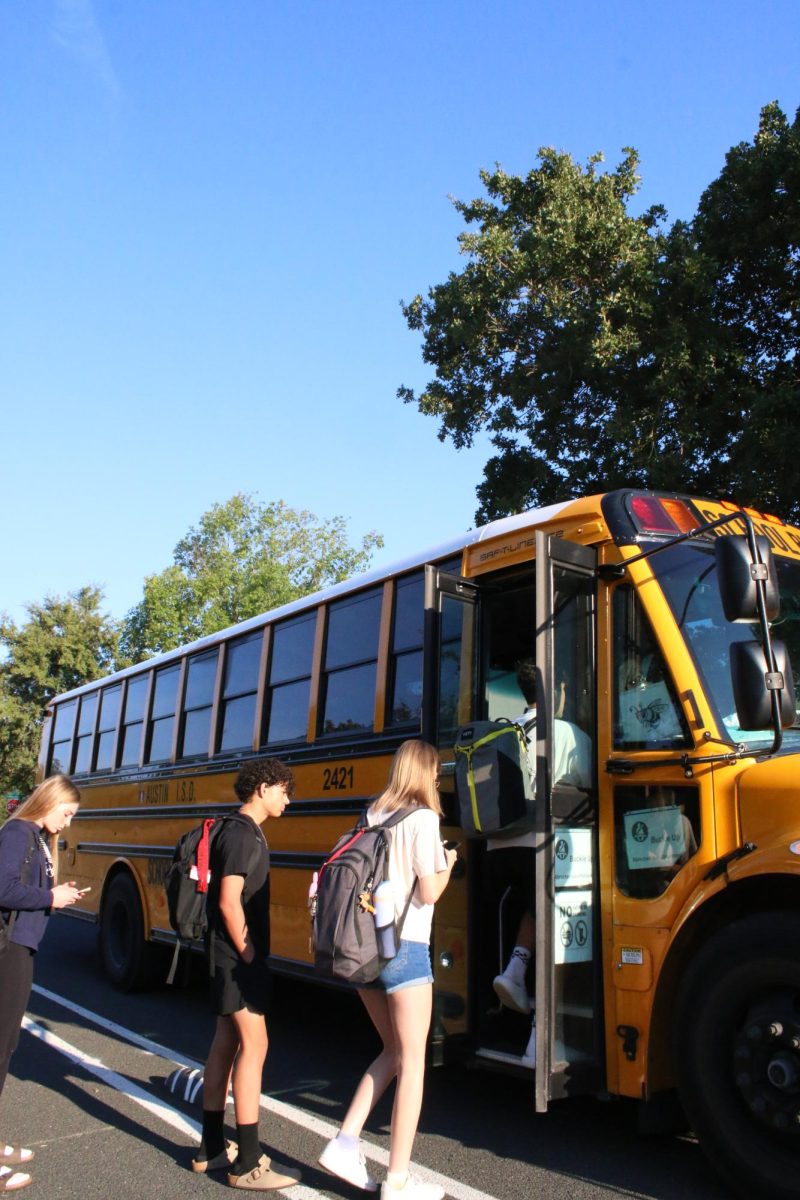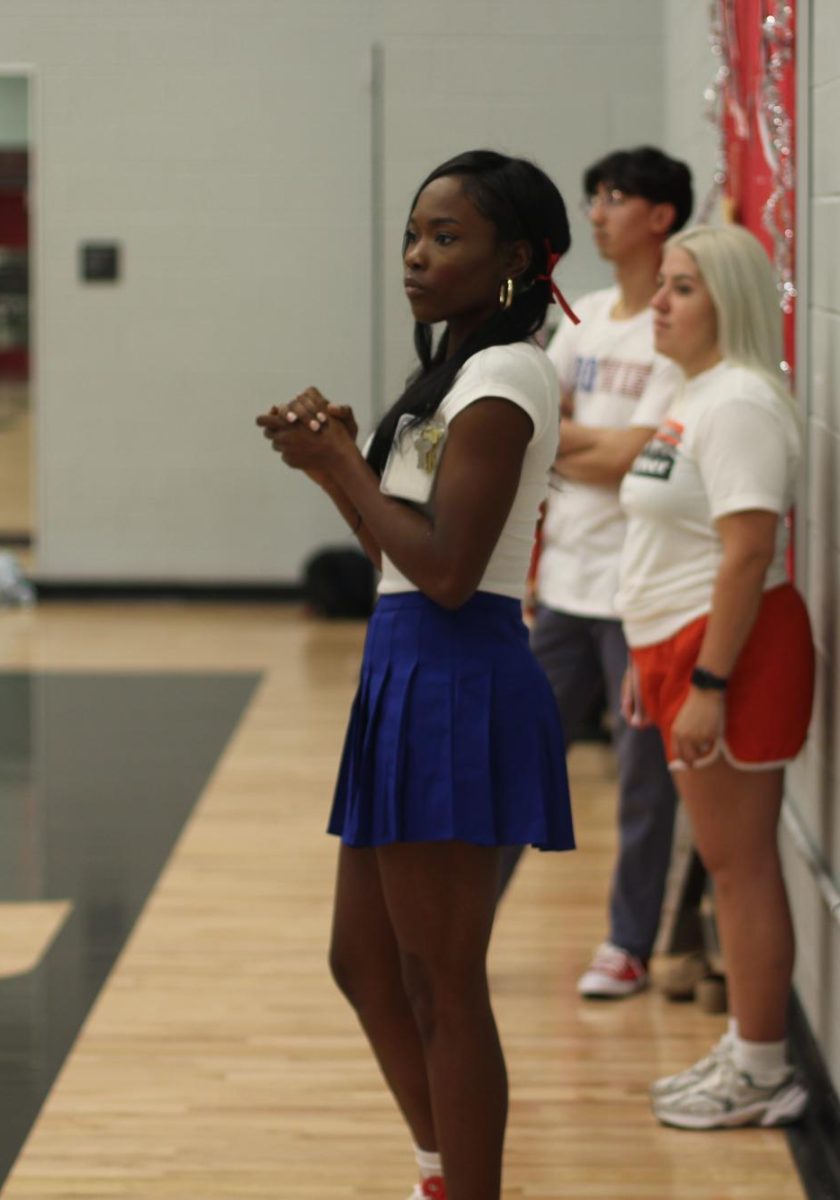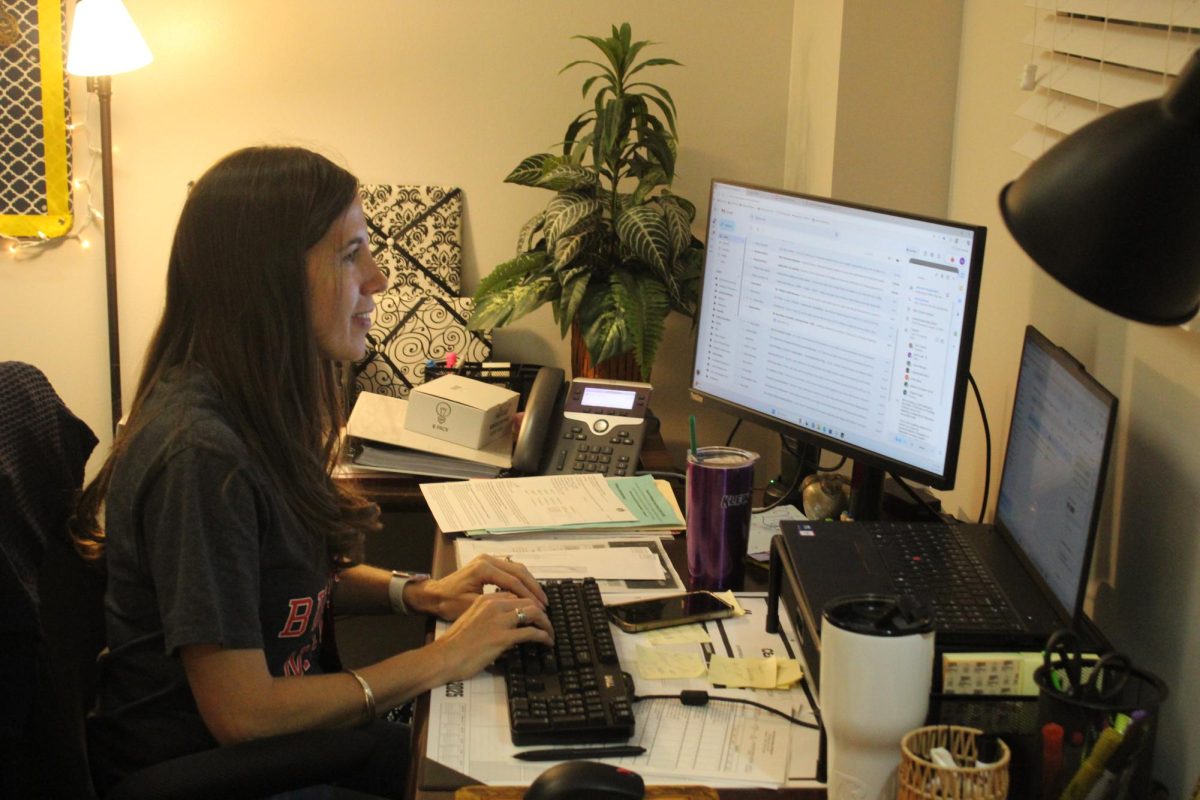Built in 1988, James Bowie High School has been open for 37 years, and its water loop/HVAC system is just as old. Due to its age, problems have become more prominent, including leaks and fluctuating temperatures within classrooms. Construction to fix the school’s AC system is currently ongoing and projected to be completed before the upcoming 2025-2026 school year.
The goal of the construction is to create individual chilling systems for each building on campus. Currently the only building with its own chilling system is the athletic building, so the construction is primarily targeting the academic and fine arts buildings.
“Separating the fine arts from the academics will be beneficial because the fine arts will be on its own water loop system,” assistant management principal Samuel Cabrera said. “The original loop system will just have to heat and cool the academics instead of the whole campus.”
A total of three new chillers will be brought in for the campus. One to fix the broken chiller in the academic building, so that the entirety of the campus isn’t just running on one. The two other chillers are going to the fine arts and cafeteria.
“There’s going to be two systems dedicated to the school,” contractor Phillip Shuler said. “The new air cooled chiller system it’s going to alleviate the demand and pressure that’s on the current water cooled system.”
There are many looking forward to the improved AC system, especially teachers in the academic building, who have dealt with its complications for many years. The air conditioning in history teacher Alejandro Garcia’s classroom has been host to some of those problems.
“Last year, in the middle of a class, a guy came in to fix it because it wasn’t working, and he did something to it that caused the pipe to blow up,” Garcia said. “Water started going all over the classroom. My whole class had to stop and move away from the AC because it had started flooding because it was so badly clogged.”
According to sophomore Alex Brady, the unstable temperatures caused by the AC can affect the learning environment.
“If the air conditioning breaks it’ll be humid, and gross,” Brady said. “I’ve seen teachers get into bad moods because of it, and students want to go work somewhere else.”
The majority of the construction will be done during the summer, to minimize the effect it has on the students and staff on campus during the school year. Currently, the parking lot behind the cafeteria has been blocked off, becoming a temporary work-space for welding.
“We’ve had some welders set up there since January, and they’re making weld connections everyday,” Shuler said. “That limits the amount of work we have to actually do down in the crawl space area.”
While most of the construction is happening in crawl spaces underneath the school, the act of welding is above ground. Having it there and instead of the crawl spaces, is meant as a safety precaution.
“The crawl space adds an extra layer of safety as far as construction goes,” Shuler said. “The goal is to minimize as much risk as possible.”
Cabrera notes that since his time at Bowie in the past four years, they have had issues with the HVAC, but with the recent renovations at the school it’s become more prominent.
“With the addition of the fine arts building renovation, it created a bigger draw on the HVAC system than anticipated,” Cabrera said. “So further upgrades to the system are needed.”
The upgrades, as well as bringing in two new chillers for the water loop, include increasing the size of the piping in the HVAC system, to allow for more cold water to circulate around the building.
“Think of it as these are the arteries or veins of your body, and they’re too small, so they’re not getting the blood flow to where you need it,” Shuler said. “This is upsizing it to allow better circulation throughout the building to cool it down.”
Throughout the years there have been many measures taken to attempt to fix the AC system at Bowie, especially in the academic building, and the new piping is something many teachers, along with Garcia, are looking forward to.
“It’s worth it, and it’s needed,” Garcia said. “If that’s going to be a long term solution compared to all these temporary fixes then I’m all for it.”








